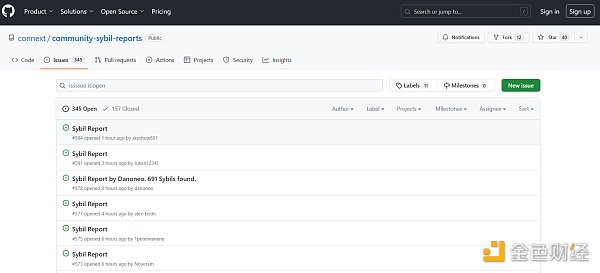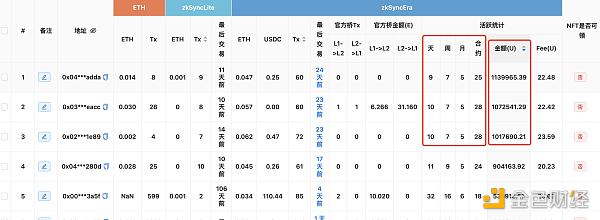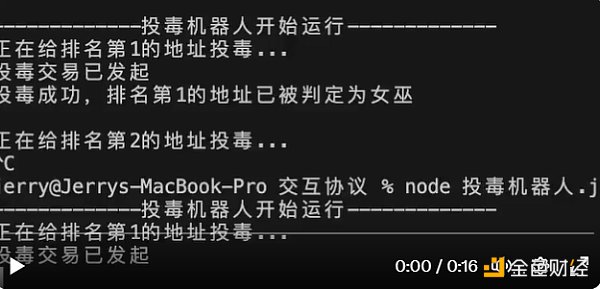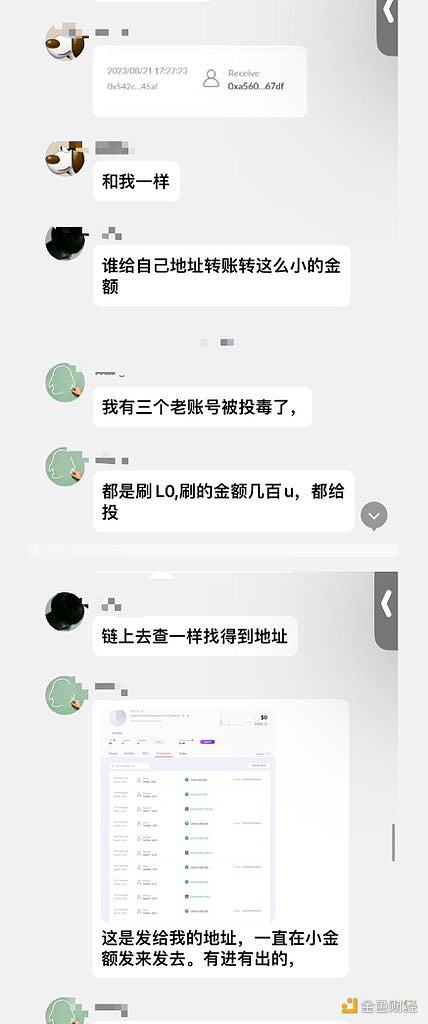LianGuai Observation | Connext Witch Hunt Program Provokes Public Anger, Poisoning may be the only solution?
LianGuai Observation Connext Witch Hunt Program Sparks Public Anger, Poisoning as the Only Solution?Author: Climber, LianGuai
Last week, the L2 interoperability protocol Connext announced the Witch Hunter program when updating the airdrop rules, which invited the community to help screen witch addresses for the project and set 25% of NEXT as a reward.
This move has had a significant effect, with hunters submitting nearly 600 reports on GitHub in just one week, involving over 20,000 contract addresses. However, while the impressive results have been achieved, the community collectively feels indignant, not only because their long-term hard work in interacting with accounts may be in vain, but also because they are angry at the project for provoking internal conflicts within the community.
In response, some community members have threatened to poison the Connext witch addresses, claiming that they can bring down the top trading volume accounts with just 0.2 U. Is it really the best solution to poison the witches, as one KOL claimed, as having no witches at all is equal to having all members as witches?
- Reviewing the Development History of Web2 Game Engines and Exploring the Future Development Path of Full-Chain Games
- Intent-driven Best practices for Web3+AI?
- In-depth analysis of Pendle LSDfi integrates RWA DeFi Lego to stack new puzzle blocks
Origin of the controversy
On August 25th, Connext released an announcement on social media calling on the community to prevent witch attacks. It mentioned that from August 24th to September 1st, if a witch hunter’s report is successful, they will receive a 25% reward in NEXT.
However, on August 17th, Connext announced its airdrop plan, and 10% of the native token NEXT will be available for claim on September 5th.
The reporting rules mainly include a first-come, first-served basis, involving at least 10 addresses, and obvious reasons for reporting, while the determination of witch addresses is entirely up to the Connext project team.

However, from the published reports, this activity can be considered the most rigorous anti-witch movement in history. Since the start of the activity, a total of 584 reports have been submitted on GitHub, involving over 20,000 addresses. Witch addresses account for 35% of the Connext airdrop addresses, including contract addresses with trading volumes of over $1 million.

In response, professional analysts have summarized several characteristics that meet the criteria for witch attacks:
· One-to-many and many-to-one transactions
· Financial connections between multiple addresses
· Wallets with low deposits but multiple operations in different projects
· NFT trading for volume manipulation
· Similar token types and similar transaction fingerprints with similar amounts of funds on different chains
Interestingly, Connext specifically pointed out that successful reporters must go through KYC to claim the reward. This means that once the identities of these “contributors” are made public, their identities may be attacked due to their “betrayal”.
Another event caused by the Witch Hunter program has also sparked even greater dissatisfaction within the community. Netizen @Airdrop_Guard posted that a certain user who only interacted with Connext through two accounts was reported, resulting in the remaining 100+ wallet addresses with similar interaction patterns being collectively defined as witches. In other words, the accounts that had worked hard to interact with Layerzero or zkSync were all in vain.
Angry Community
Connext is not the first project to be reported by the community for being a witch. The cross-chain protocol Hop Protocol has also had similar incidents before. In addition, Connext is the second project, after Zigzag, to officially confirm that consistent interaction is considered witch behavior.
Therefore, the strict definition of witch behavior and the act of inciting community conflicts have ignited the anger of the community.

Many netizens have expressed their intention to poison the reported Connext witch addresses, especially the addresses in the top 10% of transaction volume on zkSync. Some KOLs have even demonstrated short videos of poisoning using bots, although it was later proven to be mocking.
Most of the above are just empty talk, but there are indeed users who claim to have been poisoned. Their addresses have been continuously receiving small amount transfers, such as 0.0006U. Some analysts point out that the poisoning addresses are likely using scripts to send small amounts of U.

It must be said that the witch-hunting campaign initiated by Connext has caused many negative impacts beyond the anti-witch incidents. The entire community has become fearful, not only afraid of being labeled a witch due to their behavior, but also afraid of being poisoned for no reason.
However, KOL @hebi555 believes that widespread poisoning is also a solution to counter witches. He believes that only magic can defeat magic, and having all members as witches is equal to having no witches. Poisoning may be the best way to solve the witch problem.
Faced with the mobilization of the Connext project team to hunt witches and the desire of some community members to counteract with poisoning, some insiders such as @jiao_newlife have proposed relatively positive countermeasures. They are as follows:
· Perform completely manual operations, avoid running batch scripts
· Use multiple exchanges for withdrawals, such as OK, Binance, and Bitget
· Each withdrawal address corresponds to two collection sub-wallets (Bitget and OK)
· Perform withdrawals based on wallets, not projects, and only withdraw from one wallet during a unified time period, meaning a group of wallets in the same environment
· Can withdraw from Layer0 StarkNet ZK simultaneously, but cannot withdraw from multiple wallets for the same project
· Do not perform batch transfers when withdrawing from CEX, make single transfers and ensure the amounts are different
· Buy different NFTs
· Publicly disclose 1-2 addresses and let people report them, but hide the real collection cluster
There are always countermeasures when there are policies. As can be seen, community members facing the screening actions of the project team do not have to sit idly by or rely on polluting the overall environment to win. There are other ways to become wealthy through withdrawals.
Final Thoughts
Unlike Hop Protocol, Connext has raised approximately $21.75 million in funding and is led by Polygon Fund and Polychain Capital, demonstrating its strength and background. The airdrop ratio this time is not small, and there have also been corrections made to some transaction issues that were not included in the initial airdrop plan, showing the company’s careful attitude.
However, it is somewhat inappropriate to establish rules for determining witch attack behavior and to initiate initiatives for communities to report each other, especially in the current bad market environment. But in any case, indiscriminate poisoning contract addresses are not acceptable.
We will continue to update Blocking; if you have any questions or suggestions, please contact us!
Was this article helpful?
93 out of 132 found this helpful
Related articles
- Exclusive Interview with Connext Adopting a Points Mechanism to Determine the Number of User Airdrops, with Plans to Expand to 20 Chains by the End of the Year
- LianGuai Daily | Grayscale Wins Lawsuit Against the US SEC; Ethereum Foundation Launches Ethereum Execution Layer Specification
- In-depth conversation with Sui, Chief Scientist of Mysten Labs How does Sui solve the problem of network scalability from theory to practice?
- Friend.Tech frenzy subsides daily trading volume drops by 90%, Base network returns to rationality
- Explaining Zeth, the Ethereum Block Validator The First Type 0 zkEVM
- No matter how much emphasis is placed on it (1) 10 steps to ensure the security of encrypted assets
- From now on, will OP and Base become ‘family’? Maybe not, discussing the variables and prospects of superchain cooperation.






